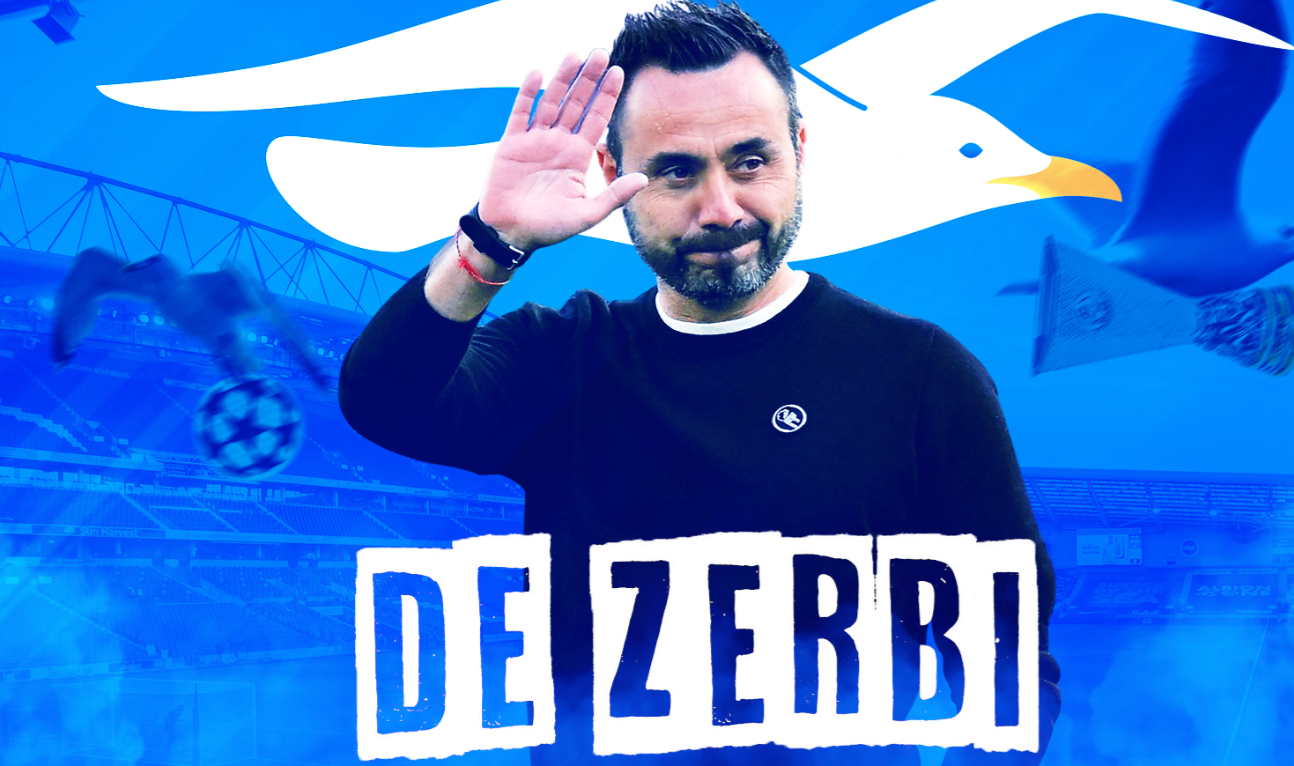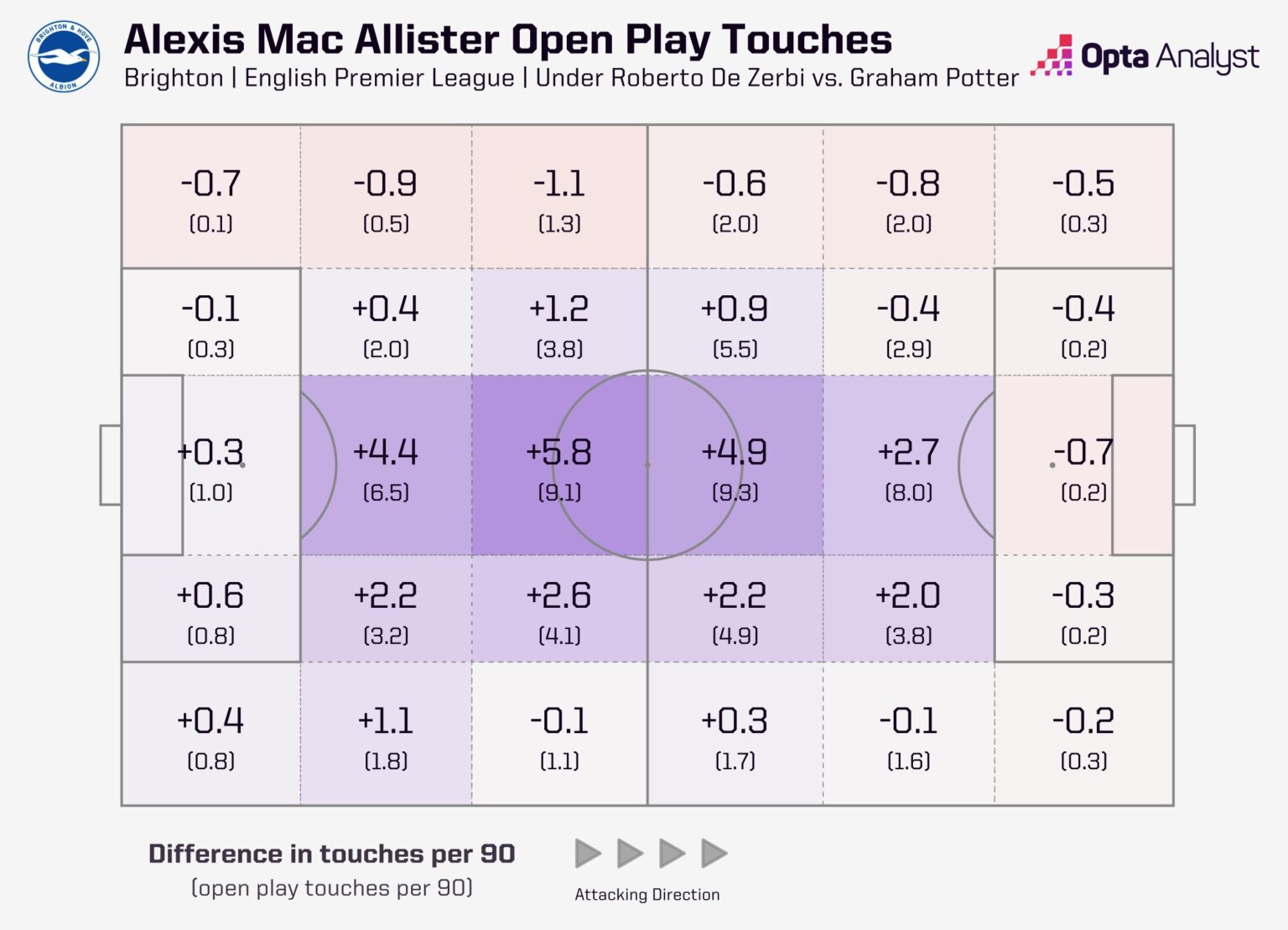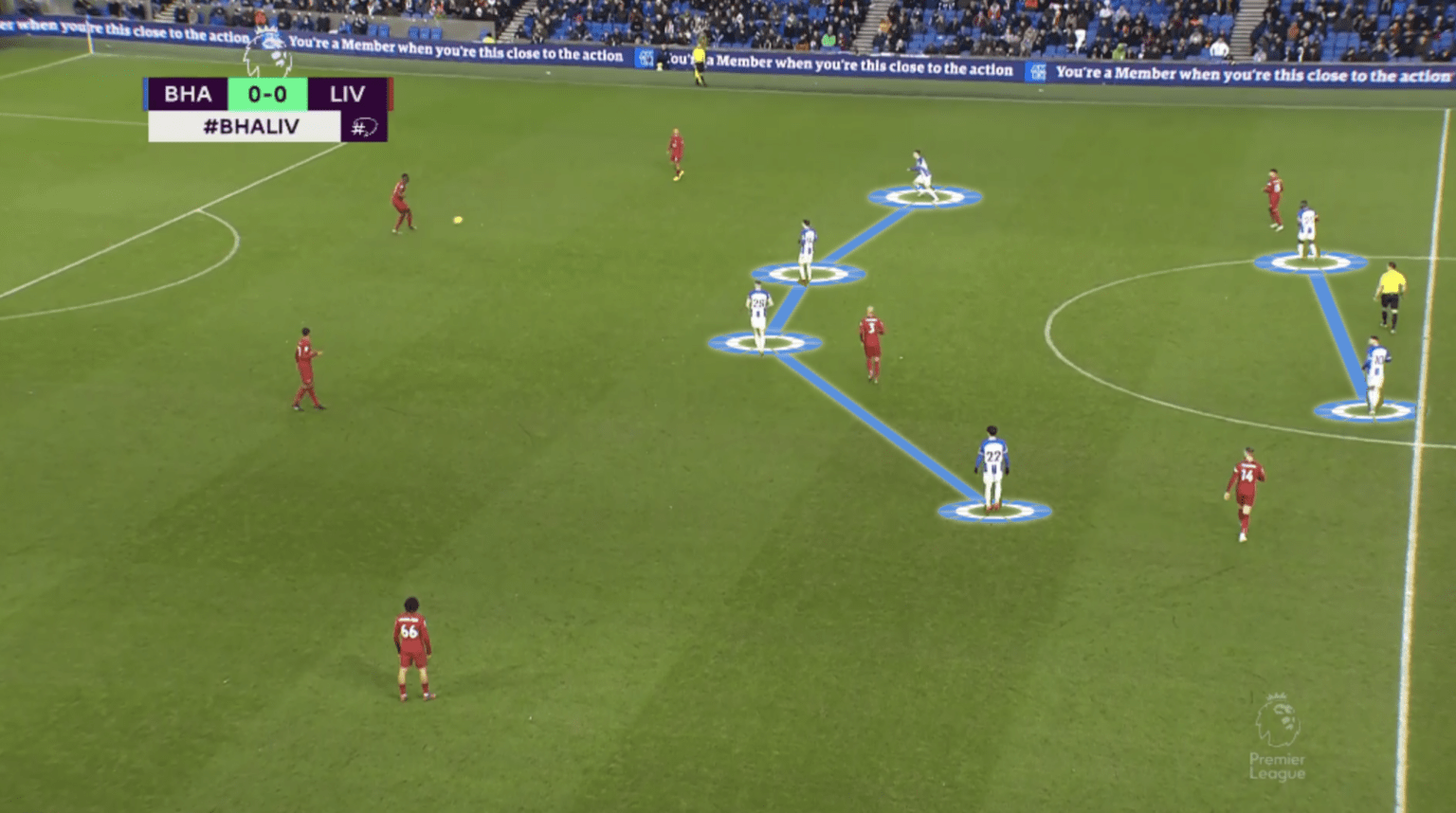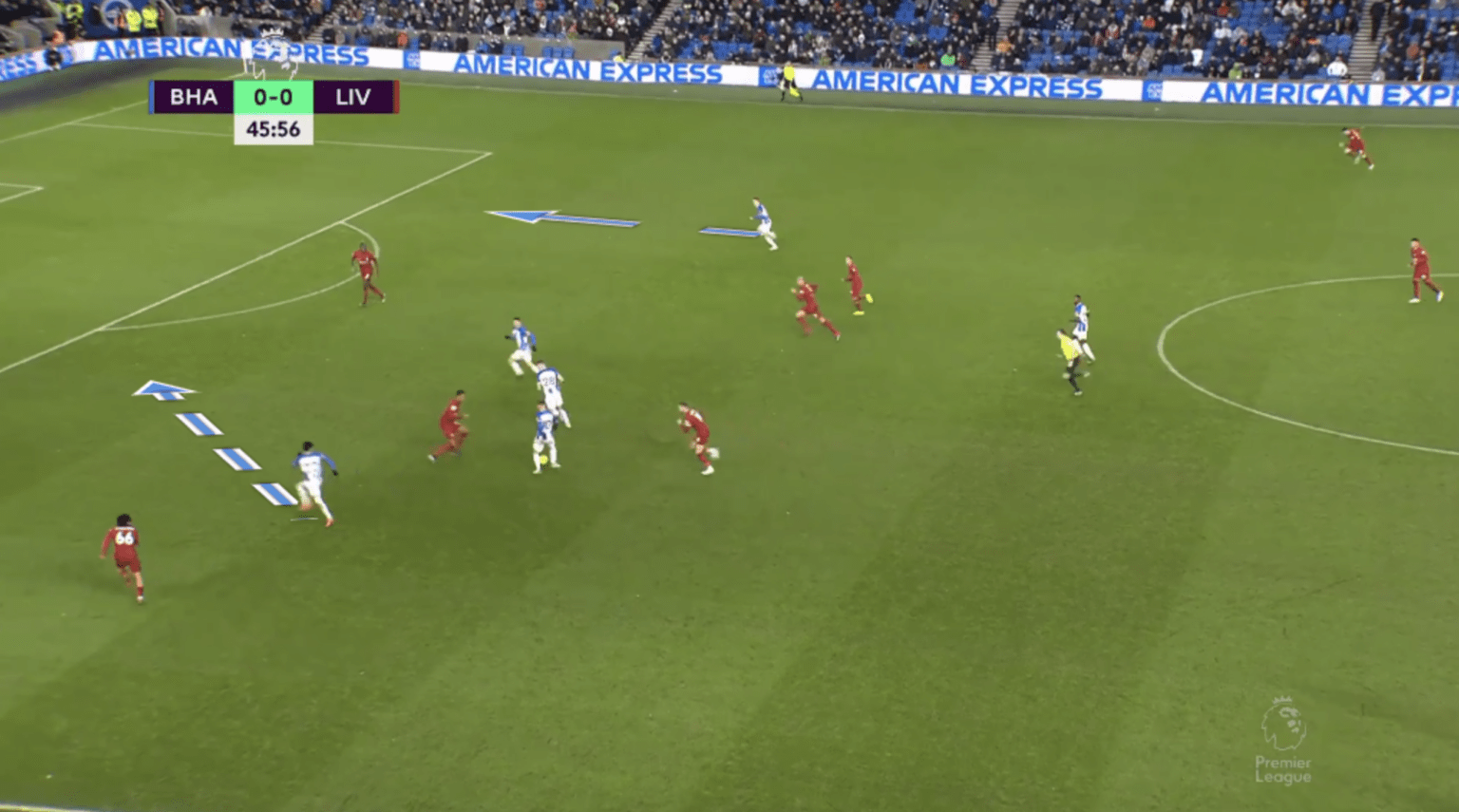Despite the loss of Captain Graham Potter and the key staff, The Amex team still showed an annoying play and played the phenomenon of this season.

The sale of famous faces that helped Brighton leave a mark last season such as Neal Maupay, Marc Cucurella, Yves Bissouma or recently Leandro Trossard has made many fans of “Seagull” worried about the performance. of the beloved football team, especially in the context of a series of teams in the Premier League heavily shopping to get a high position in a season that is forecasted to be extremely fierce. It seemed that the departure of coach Graham Potter in September while the club in the South of England was playing scientifically would cause the entire Brighton system to have problems, however, Potter’s successor is Roberto De Zerbi did a great job when continuing to help “Seagull” play the role of a dark horse.
For many clubs, the transfer of the head coach right in the middle of the season will cause a lot of inadequacies, possibly even affecting the playing style of a team. However, with 6th place in the Premier League before round 22 and reaching the 5th round of the FA Cup, it proves that Brighton has no difficulty adapting to the style of play under coach De Zerbi.
For fans who have followed Brighton for a long time, the success of “Seagull” is completely understandable when the elite of this team always make reasonable decisions and eliminate emotional factors. For example, when newly appointed Graham Potter, Brighton boldly fired Chris Hughton because he wanted the team to have a clearer and more unique play. The belief in the British military leader is a strong statement of the owners that they value the performance of the players on the field more than the result.
Potter is a coach with tactical flexibility when focusing on exploiting the full potential of players to arrange them to take on many different positions on the field. In addition, he also favors a three-center midfielder scheme and implements a policy of recruiting players who bring a lot of value to the team, instead of just to play in a certain scheme. When Potter left The Amex for Chelsea, the leaders of Brighton were in no hurry in deciding to appoint De Zerbi. In fact, Brighton has been following the Italian strategist since he was in charge of Sassuolo in Serie A.
“De Zerbi’s achievement of bringing Sassuolo to the top half of the Serie A table is impressive for us. Our president is always on the lookout for potential coaches around the world to meet the team’s long-term strategy. When Potter left, De Zerbi was the number one replacement candidate and Brighton only talked to him, “said Paul Barber – Brighton CEO. “We believe that De Zerbi is the right person to continue the project the club is working on and has the ability to develop the talented group of players we have.”
Similar to Potter, the 43-year-old Italian coach has his own football style and uses the foundation left by his predecessor to improve Brighton’s football without having to spend money on the transfer market. At the beginning of his reign, De Zerbi still applied a three-back formation but then quickly switched to a preferred 4-2-3-1 block and since then turned Brighton into one of the teams playing in the form. of the English Premier League. In a total of 12 games under the new coach, “Seagull” won 8 and conceded only 2 defeats, scoring 32 goals at a rate of 2.6 goals per game and showing a more controlled play than during Potter’s time. Specifically, Brighton owns up to 60% of the ball and makes 10 more passes into the opponent’s 16m50 area per game than in Potter’s time. One of the players to benefit from this change is Alexis Mac Allister.
 |
| Mac Allister’s touch points under De Zerbi and Potter. |
Under Potter, Brighton mainly deployed attack through full-backs. However, the transformation in De Zerbi’s system made the “Seagull” more powerful in front of the opponent’s goal. Brighton would normally attack with four players up front and flanked by two box-to-box midfielders. The effect of the above layout is obvious in terms of preventing the build-up lines from the opponent’s central defender to the upper line and ensuring the number of troops when attacking. Under Potter, the attacking quartet consisted of a pure striker and three midfielders behind. However, De Zerbi has replaced 3 midfielders with 3 pure attacking players. In terms of ball control in one-third of the opponent’s field this season, De Zerbi’s Brighton becomes an interesting unknown when ranked 3rd in the above category.
 |
The wide players play a key role in Potter’s scheme.
 |
The front quartet of Kaoru Mitoma, Evan Ferguson, Adam Lallana and Solly March was supported by Moises Caicedo and Mac Allister in the back, according to De Zerbi’s arrangement.
 |
In the 3-0 victory over Liverpool in round 20, after taking control of the Liverpool field from the pressing situation, Mitoma and March both approached the opponent’s penalty area. If in Potter’s time, both players would be required to stay on the edge and certainly would not be in a position to launch the attack that led to the opening goal in this match.
All in all, every player operating in Brighton’s opposition third has benefited from De Zerbi’s philosophy. If last season Solly March did not have a goal, in the current season, the English player has pocketed 4 goals in the last 5 matches and has 2 assists. In particular, Mitoma is the player who surprised the fans the most when he became a new inspiration for the “Seagull” attack. The Japanese striker has an expected goal index (xG) of 0.20 per 90 minutes and is just behind Trossard with 0.30 xG.
Letting Brighton play the ball proactively and directly was a reckless step for De Zerbi, but at the same time brought home the first achievements with the “Seagull” being ranked in the qualifying position for the cup. Europe next season. Another optimistic signal for the fans of the blue and white shirt team is that Brighton does not rely on any individual. Remember when Mac Allister was on leave after winning the World Cup, Pascal Grob performed well when filling the position of the Argentine midfielder and playing next to the “anchor” Moises Caicedo. In attack, in addition to Danny Welbeck, Mr. De Zerbi always has stable replacements like Adam Lallana or Evan Ferguson.
Recently, despite facing the risk of losing Caicedo to big teams, the Italian military leader still insists that Brighton’s system still has no problem if the Ecuadorian midfielder leaves. Those words proved his belief in his philosophy as well as in all the players.
Now, Brighton is always ready to compete with any team, even the Big Six teams. If keeping the form as shown in the first half of the season, a ticket to the European Cup next season is probably not too far away for the fans of The Amex stadium.